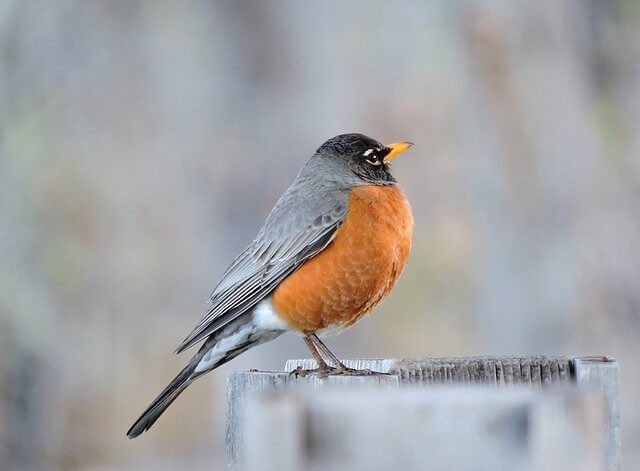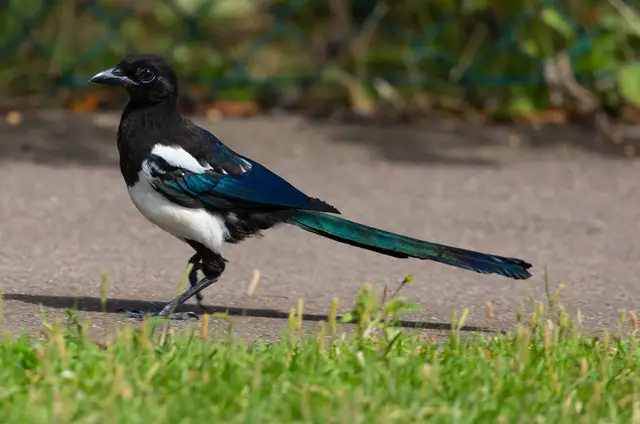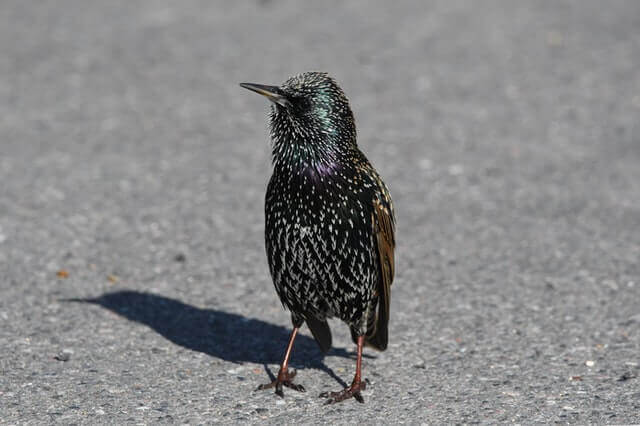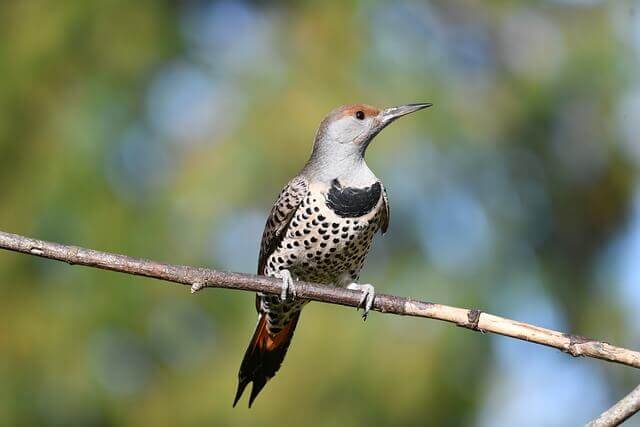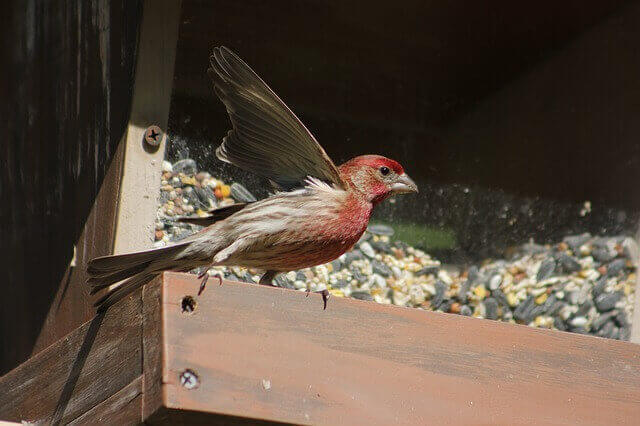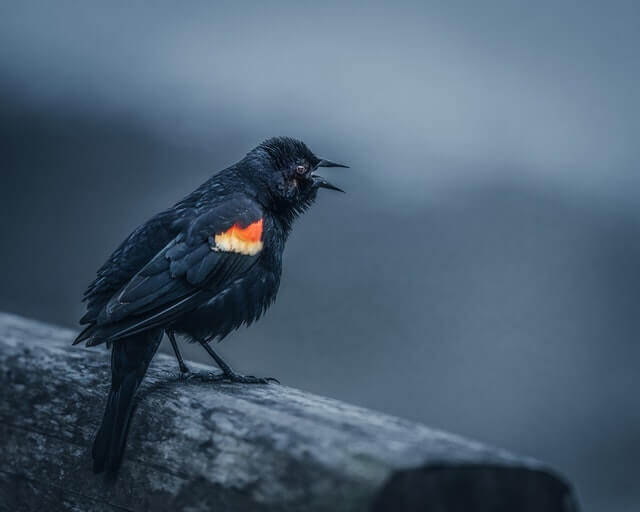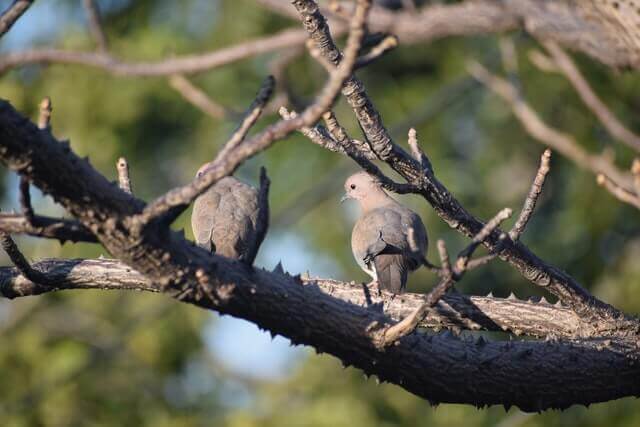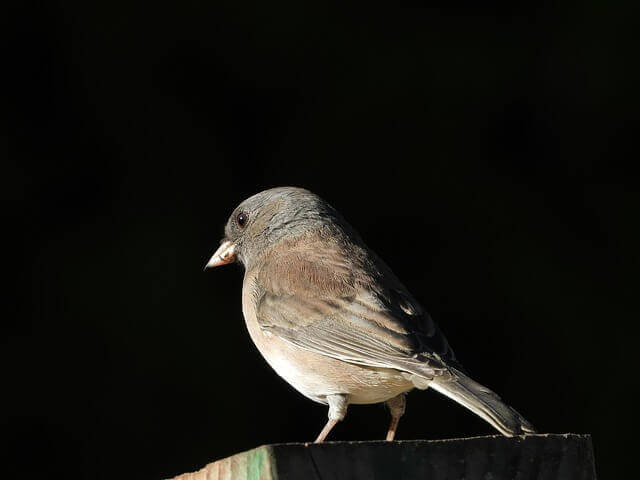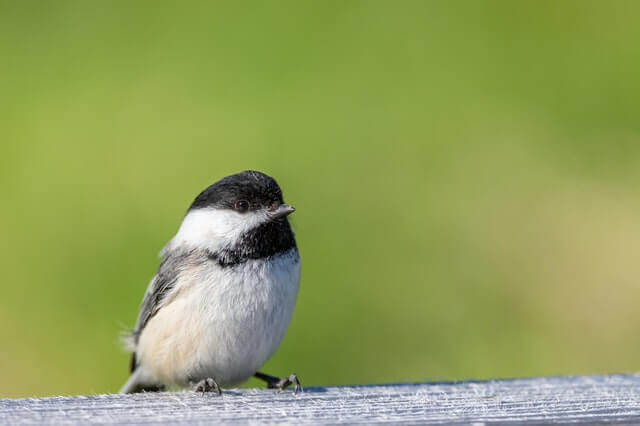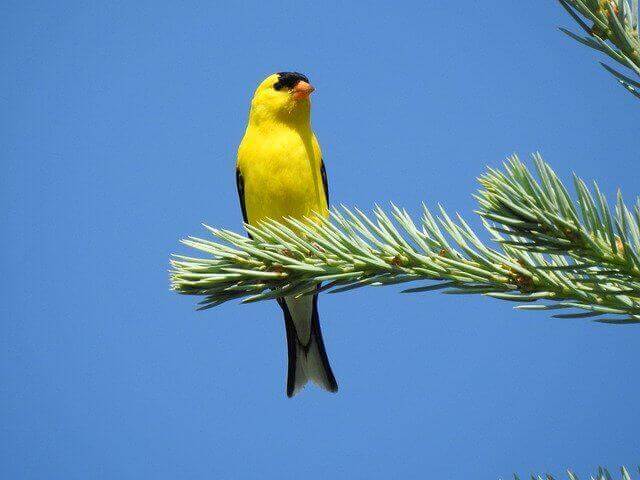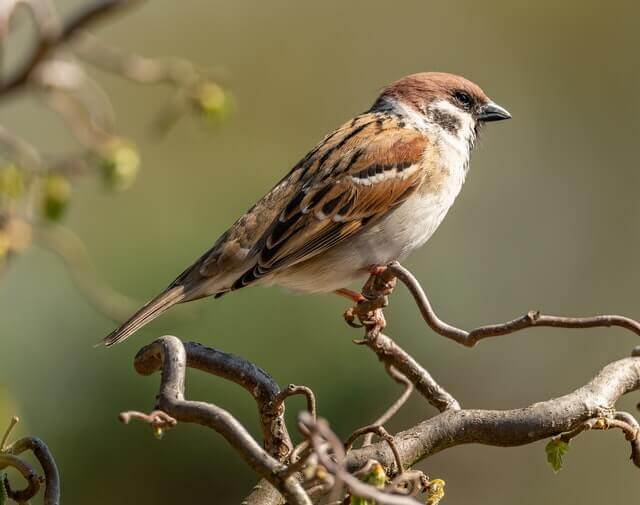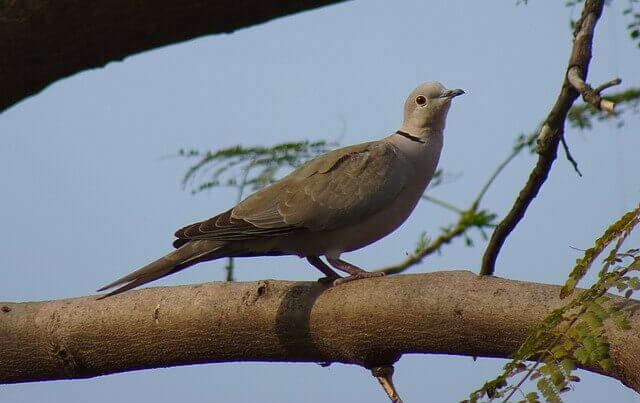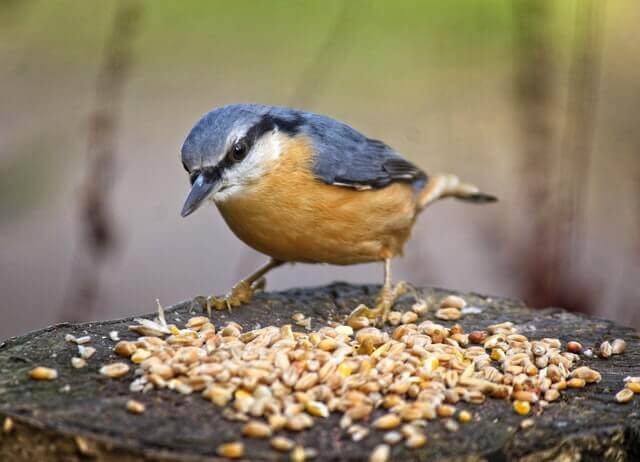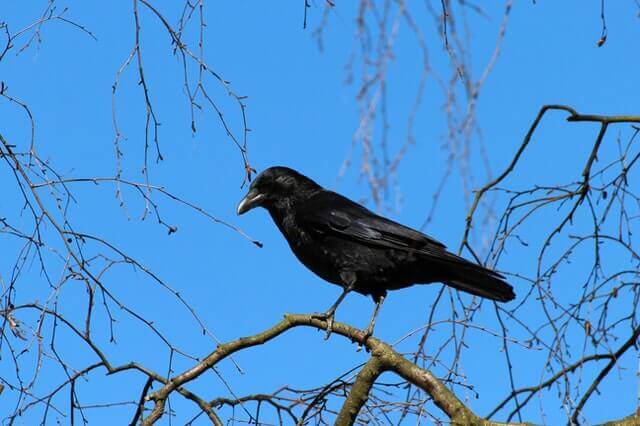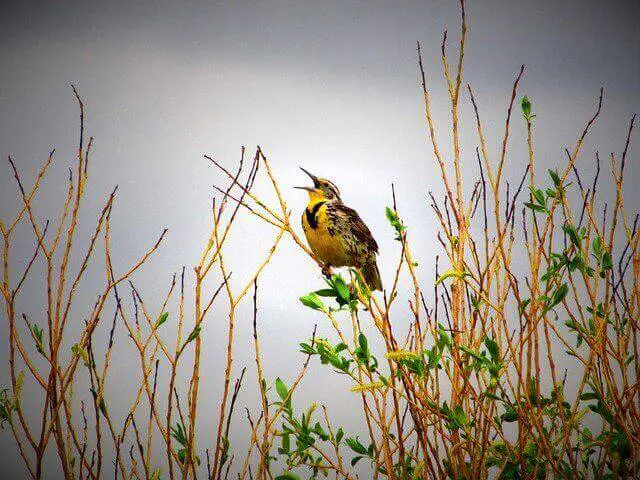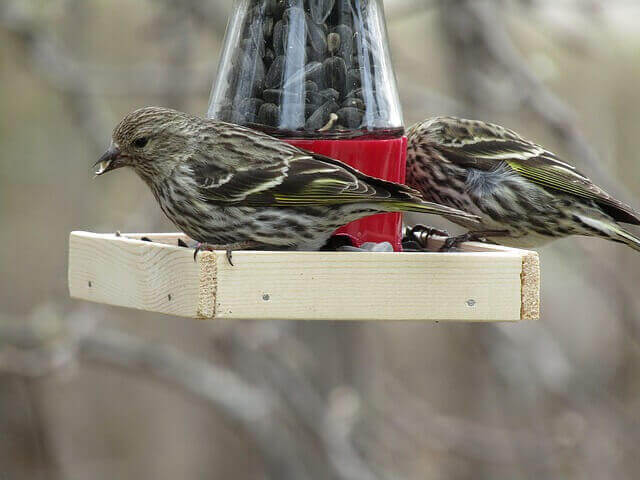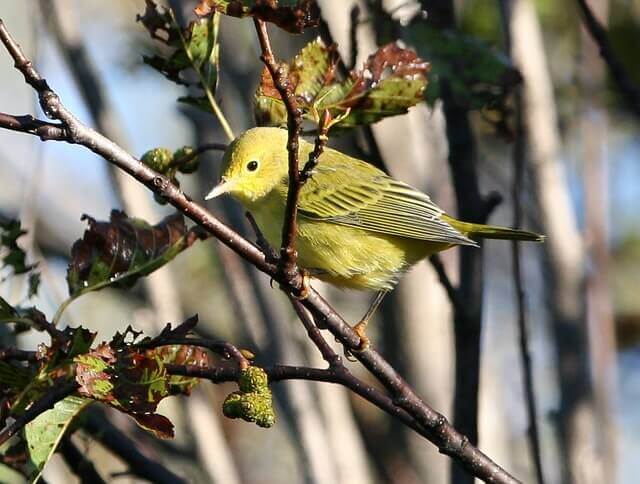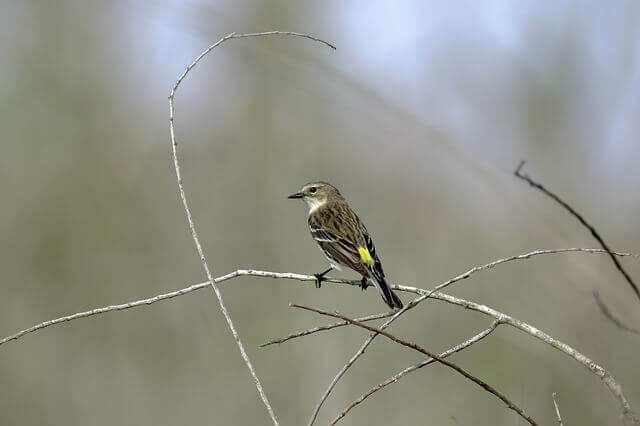Dive into the captivating world of Idaho’s avian inhabitants with our comprehensive guide. This Birdwatcher’s Guide highlights the 50 most common birds found across the Gem State, offering invaluable insights into their habitats, behaviors, and unique characteristics.
Whether you’re a seasoned birdwatcher, an outdoor enthusiast, or simply curious about the wildlife that graces Idaho’s landscapes, this guide provides a rich exploration of the diverse birdlife that calls this beautiful state home.
Table of Contents
- 1 Most Common Backyard Birds in Idaho
- 1.1 American Robin
- 1.2 Black-billed Magpie
- 1.3 European Starling
- 1.4 Northern Flicker
- 1.5 House Finch
- 1.6 Red-winged Blackbird
- 1.7 Mourning Dove
- 1.8 Song Sparrow
- 1.9 Dark-eyed Junco
- 1.10 Black-capped Chickadee
- 1.11 American Goldfinch
- 1.12 House Sparrow
- 1.13 Eurasian Collared-Dove
- 1.14 Red-breasted Nuthatch
- 1.15 California Quail
- 1.16 American Crow
- 1.17 Western Meadowlark
- 1.18 Pine Siskin
- 1.19 Yellow Warbler
- 1.20 Yellow-rumped Warbler
- 2 Seasonal Abundance of Common Birds in Idaho
- 3 Best Bird Feeders for Attracting Idaho Birds
- 4 Attracting Birds to Your Idaho Yard
- 5 Mastering Bird Identification in Idaho
- 6 Author
Most Common Backyard Birds in Idaho
American Robin
The American Robin is a songbird of the thrush family. The birds are known for their distinctive reddish-orange breast and black upper body. It is found in most of North America, from Alaska to Costa Rica, with its eastward range limit on Newfoundland, Canada.
Their habitat includes open country near woods or streams where they can find shelter as well as shrubs that provide cover while they hunt for food; parks and gardens where there are trees and bushes; suburban areas with hedges. Its favorite foods are worms, caterpillars, crickets and other insects as well as berries from many types of plants including sumac.
During migration season (February – October), Robins are more likely to be found along the Eastern Seaboard and Southern Canada. The birds are also found in the lower Midwest, Great Lakes region, and southward to central Texas.
Robins migrate to their winter range in December or January, when they start gathering along the Gulf Coast of Louisiana or Mississippi. They continue south until they reach northern South America, Central America, Cuba, Mexico and Venezuela where it’s warmer during this time of year (winter). Robins return north by late March or early April.
- Frequency: 40.81%
- Color: Mostly brown on the back with an orange-colored breast
- Habitat: Wooded areas, backyards, parks, fields
- Range: USA, Canada, Mexico
- Size: 12 – 16″ inches in length
- Weight: 72 – 95 grams
- Diet: Fruits, berries, and insects (earthworms, beetles, caterpillars
- Family: Turdidae
- Genus: Turdus
Black-billed Magpie
The Black-billed Magpie is a North American bird species. The range of the black-billed magpie extends from southern Canada to central Mexico and throughout much of the United States. It has also been introduced into Europe, where it is often considered an invasive species.
This beautiful black and white bird lives in open habitats such as grasslands, farmland, prairies, pastures, orchards and urban areas including parks and gardens. They feed on earthworms or other invertebrates, such as spiders, insects and small lizards.
In the winter, the Black-billed Magpie in Idaho takes to the trees to build nests. These nests are made of mud or bark.
- Frequency: 32.73%
- Color: Mostly black and white plumage, and has blue and green iridescent feathers
- Habitat: Towns, backyards, parks, fields
- Range: USA, Canada
- Size: 18 – 24″ inches long
- Weight: 145 – 215 grams
- Diet: Insects, carrion, seeds, rodents, berries, nuts, eggs
- Family: Corvidae
- Genus: Pica
European Starling
The European Starling is a common bird found in Europe and North America. It has a broad range, with habitats that include woodland, grassland, farmland and urban areas. The European Starlings diet consists mainly of earthworms, snails, beetles and fruit but also includes insects such as spiders.
European Starlings migrate southwards when winter arrives, but some birds will stay near home year-round. The first signs of starlings are usually seen around July and August, and you will see them nesting in these areas before winter sets in.
- Frequency: 28.93%
- Color: Black with glossy iridescence plumage
- Habitat: Forests, woodlands, backyards, edges, yards, and parks
- Range: North America, Europe, Africa, India, Middle East, China
- Size: 7 – 9″ inches long
- Weight: 60 – 100 grams
- Diet: Insects (ants, beetles, invertebrates), fruits, seeds, berries
- Family: Picadae
- Genus: Colaptes
Northern Flicker
The Northern Flicker is a common bird found in North America. It has a wide range and can be found throughout the continent, except for the Southwest United States and parts of Florida.
It lives in habitats such as woodlands, suburbs, parks, wetlands and deserts but prefers coniferous forests with open spaces nearby. The Northern Flicker eats mainly insects during summer months but switches to eating nuts, seeds and berries when winter arrives.
During migration season, they head south from Canada through the US down into Mexico before returning north again each year in the spring.
- Frequency: 28.44%
- Color: Light brown with black bars across back, chest, wings, belly
- Habitat: Forests, woodlands, backyards, edges, yards, and parks
- Range: North America, Central America, Cuba, Cayman Islands
- Size: 10 – 14″ inches
- Weight: 85 – 165 grams
- Diet: Insects (ants, beetles, invertebrates), fruits, seeds, berries
- Family: Picadae
- Genus: Colaptes
House Finch
The House Finch is a small bird that is found in North America. They are native to the eastern half of the United States and Canada, where they can be found in residential areas, parks, grassland, woodland edge habitats such as pine or oak forests near fields and farmlands and meadows.
The House Finches range from Southern Ontario south to Texas and west as far as Oklahoma, except for most coastal states. The diet of these birds consists mainly of seeds, but they also eat insects, berries and other fruits as well as some invertebrates like worms or grubs.
- Frequency: 27.29%
- Color: Reddish face and upper breast, brown streaks on back, belly, and tail.
- Habitat: urban and suburban areas, backyards, edges, yards, and parks
- Range: Canada, USA, Mexico
- Size: 5 – 6″ inches
- Weight: 16 – 27 grams
- Diet: Aphids, grains, seeds, berries, nettle, dandelion, sunflower
- Family: Fringillidae
- Genus: Haemorhous
Red-winged Blackbird
The Red-winged Blackbird is one of the most common birds in North America. It has a wide range, found all over North America and parts of South America.
It breeds from southern Canada southward to Central America, and in the eastern United States from Florida northward into Maine and coastal New England; it winters primarily along the Gulf Coast region of Texas through Mexico.
They prefer open habitats such as wetlands, marshes, prairies or grasslands where they can find insects like crickets, beetles, grasshoppers and berries to eat.
- Frequency: 27.25%
- Color: All black with red patches on shoulder and a yellow wing bar
- Habitat: Deciduous forests, conifers, roadside, rivers, backyards, parks
- Range: North America, Central America
- Size: 6.7 – 7.1″ inches length
- Weight: 41.5 – 65 grams
- Diet: Seeds and insects (butterflies, dragonflies, moths, frogs, worms, spider, snails, carrion, flies.)
- Family: Icteridae
- Genus: Agelaius
Mourning Dove
The Mourning Dove is a species of bird that is native to North America. The dove ranges from Canada and the US down to Mexico, but its main population in located in the central part of the United States.
Their habitat includes open fields, woodlands, parks and yards with trees nearby. They eat mostly seeds and grains, but will also eat insects when available.
The Mourning Dove migrates south for winter starting in September or October until they return north in March or April.
- Frequency: 25.83%
- Color: Light gray-brown and lighter and pinkish below. The wings have black spots.
- Habitat: Open habitats, urban areas, farms, prairie, grassland, wooded area
- Range: USA, Canada, Mexico, Central America, Greater Antilles
- Size: 12″ inches length
- Weight: 112 – 170 grams
- Diet: Rapeseed, corn, millet, safflower, sunflower seeds, pokeberry, sesame, and wheat.
- Family: Columbidae
- Genus: Zenaida
Song Sparrow
The Song Sparrow is a small, ground-dwelling bird that lives in North America. The song sparrow’s range spans from the Arctic regions of Canada to the southern parts of the United States.
It has also been spotted as far south as Mexico and Central America. This species is usually found in open areas near water or woodland habitats.
Song sparrows eat mostly insects, but they also consume seeds and berries when available. They have one of the widest ranges of any North American songbird.
- Frequency: 25.29%
- Color: Gray head, white cheek, a black bib, rufous neck
- Habitat: Urban centers, farms, backyards, edges, yards, and parks
- Range: Europe, Mediterranean, Asia, Australasia, Africa, and the Americas
- Size: 5.5 – 7.0″ inches
- Weight: 25 – 40 grams
- Diet: Grains, seeds, and insects
- Family: Passeridea
- Genus: Passer
Dark-eyed Junco
The Dark-eyed Junco, is a common bird that ranges from Alaska to Newfoundland and south to Mexico. Dark-eyed juncos inhabit many habitats including forest edges, brushy fields, pastures with scattered trees or shrubs, bogs with stunted spruce or other bushes, swamps with dense stands of cattails and sedges.
They feed on insects and other invertebrates like spiders and snails, but will occasionally eat seeds when they are abundant enough.
This migratory bird breeds across Canada and into the northern United States during summer months before migrating south for winter in Central America.
- Frequency: 23.27%
- Color: Gray head, neck, breast, gray/brown backs and wings, white underside
- Habitat: Wooded areas, forest edges, roadsides, gardens, parks.
- Range: USA and Canada
- Size: 5.1 – 6.9″ inches
- Weight: 18 – 30 grams
- Diet: Seeds, insects, and arthropods
- Family: Passeriformes
- Genus: Junco
Black-capped Chickadee
The Black-capped Chickadee is a bird that lives in North America. It has a large range and habitat, from southern Canada to Mexico.
The Black-capped Chickadee feeds on insects, seeds, fruit and berries during the summer months. During winter, they feed on insects, seeds and tree sap for energy to keep warm during cold weather.
They migrate south for the winter months of October through March, but return north again when warmer temperatures come back around April or May.
- Frequency: 22.05%
- Color: Black cap, white on face, white/reddish-brown flanks
- Habitat: Deciduous and mixed forests, backyards, parks
- Range: USA and Canada
- Size: 11.5 -16 cm length
- Weight: 8 – 15 grams
- Diet: Insects, seeds, berries
- Family: Paridae
- Genus: Poecile
American Goldfinch
American Goldfinches are native to North America. They inhabit the United States and Canada, but can also be found in Central America. These birds live near water sources and their favorite foods include seeds, insects, fruit and small animals.
Goldfinches migrate during winter months from their northern habitats southward into Mexico where they will stay until it is time for them to migrate back north again in the springtime.
- Frequency: 19.88%
- Color: Face, neck, and underside are yellow, black wings with white bars
- Habitat: Deciduous forests and thickets, roadside, grasslands, backyards, meadows
- Range: Canada, USA and Mexico
- Size: 4.3 – 5.5″ inches length
- Weight: 12 -18 grams
- Diet: Grass, dandelions, chickweed, sunflowers and ragweed, thistle, red alder, birch, spruce seeds
- Family: Carduelinae
- Genus: Spinus
House Sparrow
The House Sparrow is a species of bird that is native to Eurasia. They are found all over the world, including North America and Africa.
They have adapted well to humans and can be found in urban areas such as parks, backyards, or on rooftops where they build their nests from straws or sticks. House sparrows eat seeds, insects, grain and other food sources in their range, which can vary depending on the season.
They eat almost anything they can find, including insects, worms and seeds. House sparrows migrate south for the winter months (typically November through March) when their food sources are low.
- Frequency: 18.83%
- Color: Gray head marking, a reddish-brown back, and gray underparts
- Habitat: Urban centers, suburban areas, backyards, edges, yards, and parks
- Range: North America, Central America, South America, Africa, Australia, New Zealand
- Size: 5.5 – 7.1″ inches in length
- Weight: 25 – 39 grams
- Diet: Insects, beetles, caterpillars, aphids,, grasshoppers, crustaceans, earthworms, vertebrates
- Family: Passeridea
- Genus: Passer
Eurasian Collared-Dove
The Eurasian Collared-Dove is a bird that can be found in many areas of the world. The common Eurasian Collared-Dove is one of the most widely distributed birds in the world, and are very adaptable to living near humans or other species of animals. The Eurasian Collared-Doves range extends from Europe all the way to Asia, Africa and North America.
They are found in various habitats such as coastal areas, swamps, agricultural fields and meadows, where they find food such as seeds, fruits and small animals like snails. They migrate south for winter because there’s less food available during this time of year.
- Frequency: 18.60%
- Color: Pinkish-gray with ablack half-collar bar with white on its neck
- Habitat: Urban centres, farms, backyards, edges, yards, and parks
- Range: North America, Central America, South America, Europe, Asia
- Size: 13″ inches
- Weight: 150 grams
- Diet: Millet, milo, sunflower, wheat, corn and berries
- Family: Columbidae
- Genus: Streptopelia
Red-breasted Nuthatch
The Red-breasted Nuthatches range is all over the United States, Canada and in some parts of Mexico. They reside in deciduous forests but avoid evergreen trees or areas of dense growth like brushy woodlands or thickets.
The breeding season starts in April and ends at the end of July or beginning of August, depending on latitude.
The Red-breasted Nuthatches diet consists primarily of insects during summer months, which then switches to nuts and seeds or berries as winter approaches They are a common sight at feeders year round because they often eat sunflower seeds or suet.
- Frequency: 16.15%
- Color: Blue-gray on top with a cinnamon under, white face & throat, with a black stripe on the eye
- Habitat: Coniferous forests, woodlands
- Range: North America, Asia
- Size: 4.5″ inches
- Weight: 10 grams
- Diet: Grains, seeds ,nuts, spiders and insects
- Family: Sittidae
- Genus: Sitta
Related Post: How to Attract Nuthatches to your Backyard
California Quail
The California Quail is a ground-dwelling bird that typically lives in the open grasslands, oak savannas and chaparral of the western United States. Quails live primarily on seeds, berries and insects during their breeding season, but switch to weed seeds, acorns and tree bark when food becomes scarce.
During migration seasons, they will travel south from California to Mexico for winter months before returning northward in springtime to nest. They are considered common and can be found on farms, yards, pastures, grasslands, forests and marshes.
The males usually sing for two or three minutes each morning to attract females to their territory, which they will then defend by chasing away other males who enter it during mating season (April-July).
- Frequency: 15.66%
- Color: curving plume, brown cap and a black face with a brown back, a grayish blue chest and a brown belly
- Habitat: Open country, farms, parks, woodlands, towns, cities
- Range: southwestern United States, Columbia, Hawaii, Chile, Uruguay, Brazil, Argentina, Peru, South Africa, New Zealand, Australia
- Size: 16 – 21″ inches in length
- Weight: 315 -620 grams
- Diet: invertebrates, carrion, seeds, eggs fish, grains, mice, frogs, and other small animals.
- Family: Odontophoridae
- Genus: Cyrtonyx
American Crow
The American Crow is a bird that has a large range and can be found in many areas of North America. They are primarily scavengers, but they will also eat fruits, seeds, insects and carrion.
They eat almost anything including insects, earthworms, snakes, small mammals and eggs from other birds’ nests.
They are often seen scavenging on the ground for food such as insects, fruit or near garbage. In the winter time, they migrate to warmer climates where food is more plentiful.
- Frequency: 14.74%
- Color: Black
- Habitat: Open country, farms, parks, woodlands, towns, cities
- Range: Canada, USA, Mexico
- Size: 16 – 21″ inches in length
- Weight: 315 -620 grams
- Diet: invertebrates, carrion, seeds, eggs fish, grains, mice, frogs, and other small animals.
- Family: Corvidae
- Genus: Corvis
Western Meadowlark
A beautiful species of songbird, the Western Meadowlark is a member of the Icteridae family. Found in the southwestern portion of the United States, the West Virginia-Oregon-Idaho flyway includes portions of Idaho, Montana, Nevada, Arizona, New Mexico, Texas, Oklahoma, Kansas, Nebraska, Colorado, Wyoming, and the Grand Canyon.
A good place to spot the species is at the Cedar Point National Wildlife Refuge, Utah. Also, you may want to consider looking for it at Sawtooth National Forest in Idaho Falls.
During the day, it roosts in open places, like tree canopies, and in caves, whereas at night it roosts in dense trees or burrows. At the same time, it tends to build nests in tree crevices. It feeds mostly on bugs, but will also feed on seeds and berries.
- Frequency: 11.78%
- Color: Mostly brown upper with black streaks and yellow underparts
- Habitat: Pastures, prairies, grasslands, and fields,
- Range: Western and central North America
- Size: 8.5″ inches in length
- Weight: 90 – 115 grams
- Diet: Bugs, seeds, berries
- Family: Icteridae
- Genus: Sturnella
Pine Siskin
The Pine Siskin is one of the smallest birds to inhabit the Idaho mountains. In the Cedar Creek National Park, the Pine Siskin is known to be seen almost every day during the peak of the season, from early spring all the way until late September.
However, during other times of the year, they can be found throughout the Cedar Creek and the Ketchum National Forests. They also have been known to migrate to Northern Idaho and Southern Utah during the winter. Although they are rare, they are also very colorful and are often seen at dawn and dusk.
- Frequency: 11.62%
- Color: Brown upper and pale under, yellow or white patches on wings
- Habitat: Deciduous forests and thickets, roadside, grasslands, backyards, meadows
- Range: USA, Canada
- Size: 4.5 – 5.5″ inches
- Weight: 12 -18 grams
- Diet: Grass, dandelions, chickweed, sunflowers and ragweed, thistle, red alder, birch, spruce seeds
- Family: Spinus
- Genus: S. pinus
Yellow Warbler
The Yellow Warbler is a small bird found throughout North America. The range of the yellow warbler extends from Canada to Mexico and as far south as Central America.
The bird’s habitat consists of deciduous forests, pine woods and mixed woodlands. The food of the yellow warbler includes insects such as spiders, caterpillars and beetles; fruits such as wild cherries, berries and apples; seeds like blackberries and milkweed pods; eggs of other birds like thrushes or grouse; and earthworms.
Yellow Warblers are migratory birds, which means that they travel south for winter by following an annual pattern.
- Frequency: 11.49%
- Color: Greenish-yellow upper and are a duller yellow underside
- Habitat: marshes,swamps, streams, thickets, orchards, farmlands, forest edges, backyards
- Range: North America, Central America, South America
- Size: 4.0 – 7.0″ inches
- Weight: 7 – 25 grams
- Diet: caterpillars,mayflies, moths, mosquitoes, beetles, damselflies, treehoppers, spiders, berries.
- Family: Parulidae
- Genus: Setophaga
Yellow-rumped Warbler
The Yellow-rumped Warbler is a small bird that resides in North America. They have a range of eastern Canada to the northern states and southern Ontario, as well as all the way down to Texas.
The yellow-rumped warblers habitat includes areas such as deciduous forests, mixed coniferous and deciduous forests, swampy habitats with wetland plants such as bayberries and highbush blueberry shrubs.
These birds eat insects as well as other invertebrates like spiders, centipedes, beetles and ants. They have been observed migrating south for the winter months from New England to Central America, with some of them moving all the way down to South America!
- Frequency: 11.46%
- Color: Yellow patches on the crown,flanks, rump & blackish-blue streaks on the back, breast and wings
- Habitat: Deciduous forests and thickets, roadside, grasslands, backyards
- Range: U.SA, Canada, Mexico, Central America, and the Caribbean
- Size: 4.7 – 5.9″ inches
- Weight: 10 – 18 grams
- Diet: grasshoppers, gnats, aphids,caterpillars, wasps, beetles, spiders, berries,
- Family: Parulidae
- Genus: Setophaga
The backyard birds below all have a frequency of less than 11% year-round
- White-crowned Sparrow
- Barn Swallow
- Brewer’s Blackbird
- Lesser Goldfinch
- Cedar Waxwing
- Northern Harrier
- Rock Pigeon
- Ruby-crowned Kinglet
- Downy Woodpecker
- Mountain Chickadee
- Double-crested Cormorant
- Tree Swallow
- Belted Kingfisher
- Brown-headed Cowbird
- Chipping Sparrow
- House Wren
- Western Tanager
- Spotted Towhee
- Violet-green Swallow
- Black-chinned Hummingbird
- Western Kingbird
- Lazuli Bunting
- Bullock’s Oriole
- Cliff Swallow
- Western Wood-Pewee
- Northern Rough-winged Swallow
- Black-headed Grosbeak
- Ring-necked Pheasant
- Cassin’s Finch
- Yellow-headed Blackbird
Seasonal Abundance of Common Birds in Idaho
| Year-round Idaho Birds | Summer Idaho Birds | Winter Idaho Birds |
|---|---|---|
| American Robin (41%) Freq. | American Robin (45%) | Dark-eyed Junco (45%) |
| Black-billed Magpie (33%) | Mourning Dove (34%) | Black-billed Magpie (39%) |
| Northern Flicker (29%) | Song Sparrow (25%) | Northern Flicker (35%) |
| House Finch (29%) | House Finch (24%) | House Finch (32%) |
| European Starling (28%) | Red-winged Blackbird (24%) | American Robin (31%) |
| Red-winged Blackbird (28%) | Yellow Warbler (23%) | European Starling (29%) |
| Song Sparrow (28%) | European Starling (23%) | Black-capped Chickadee (27%) |
| Dark-eyed Junco (26%) | Black-billed Magpie (23%) | Song Sparrow (28%) |
| Mourning Dove (26%) | Northern Flicker (23%) | Common Raven (23%) |
| Black-capped Chickadee (23%) | American Goldfinch (22%) | House Sparrow (22%) |
Best Bird Feeders for Attracting Idaho Birds
- Tube Feeders: Versatile and accommodating, tube feeders can hold various types of birdseed. Opt for black oil sunflower seeds to entice Goldfinches, Chickadees, Woodpeckers, Nuthatches, and Pine Siskins.
- Ground Feeders: Enhance your setup with a tray positioned beneath your tube feeders, generously filled with black oil sunflower seeds. This arrangement is sure to attract Cardinals, Jays, Finches, and Sparrows to your feeding station.
- Platform Feeders: Elevate your bird-watching experience by offering Millet or Corn on platform feeders. These offerings cater to small and medium-sized birds, including sparrows, Blackbirds, Towhees, Juncos, Doves, Grackles, and Starlings.
- Peanut Feeders: Add a touch of variety to your feeding area with peanut feeders. These feeders are magnets for Woodpeckers, Chickadees, Nuthatches, Titmice, Jays, Juncos, Finches, and Sparrows.
- Suet Feeders: Especially valuable during the winter months, suet feeders provide essential sustenance for Woodpeckers, Cardinals, Nuthatches, Kinglets, Wrens, and Chickadees.
- Hummingbird Feeders: While primarily designed for hummingbirds, these feeders often attract a delightful array of other bird species as well.
By selecting the right feeders and birdseed, you can create an inviting haven for Idaho’s diverse bird population right in your backyard.
Attracting Birds to Your Idaho Yard
To create a bird-friendly haven in your Idaho yard, consider these tips:
- Diverse Bird Feeders: Place various bird feeders to entice a wide range of bird species to frequent your yard.
- Refreshing Water: Incorporate a water feature like a birdbath, fountain, or stream, ensuring the water remains clean and flowing, not stagnant.
- Native Plantings: Cultivate native plants, trees, and shrubs that offer food and shelter. Opt for species such as Blackberries, Elderberries, Oaks, Sumacs, and more.
- Natural Habitat: Allow your grass to grow taller, providing both cover and a source of seeds for visiting birds.
- Brush Piles: Maintain a brush pile to offer food, protection, and nesting opportunities for birds, enhancing your yard’s appeal.
- Eco-friendly Practices: Avoid using pesticides and herbicides as they can be harmful to birds and disrupt their natural foraging habits.
- Nest Boxes: Install nest boxes to attract breeding birds, ensuring they are cleaned annually for optimal occupancy.
By implementing these practices, you can create an inviting environment for a diverse array of bird species in your Idaho yard.
Mastering Bird Identification in Idaho
Birdwatching in Idaho is an exhilarating journey filled with a diverse array of feathered inhabitants. To become a proficient bird identifier, hone your skills by considering these essential aspects:
- Size Matters: Begin your observation by gauging the bird’s size, categorizing it as small (sparrow-sized), medium (pigeon-sized), or large (goose-sized).
- Silhouette Secrets: Take note of the bird’s silhouette. Observe tail length, bill shape, wing configuration, and the overall contour of its body.
- Vivid Colors: Dive into the bird’s color palette. Document the primary colors adorning its head, back, belly, wings, and tail. Don’t forget to capture secondary hues, distinctive patterns, bands, spots, or highlights.
- Behavioral Clues: Decode avian behavior. Is the bird ground-dwelling or perched high in the treetops? Does it prefer solitude or socializing in flocks? Investigate its dietary preferences and foraging techniques.
- Habitat Insights: Explore the bird’s habitat. Is it thriving in woodlands, parks, shrublands, grasslands, meadows, near shores, or within marshy landscapes?
- Technological Aid: Amplify your identification prowess with the assistance of cutting-edge bird identification apps, such as those offered by eBird mobile or Audubon.
By mastering these techniques, you’ll embark on a fulfilling birdwatching journey in the picturesque settings of Idaho, becoming an astute observer of the avian world. Happy birdwatching!


